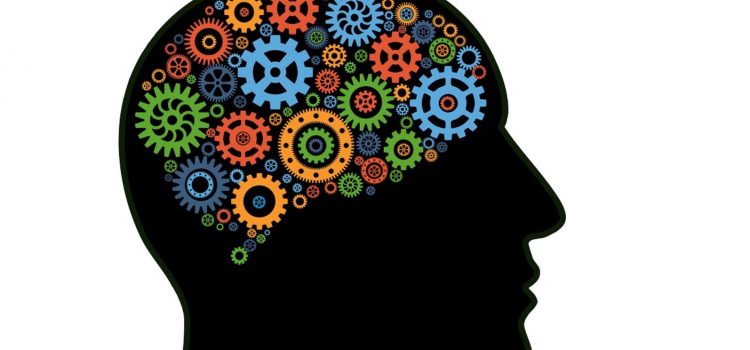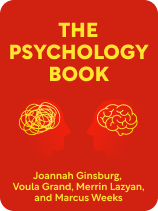

This article is an excerpt from the Shortform book guide to "The Psychology Book" by Catherine Collin, Nigel Benson, et al.. Shortform has the world's best summaries and analyses of books you should be reading.
Like this article? Sign up for a free trial here.
What is psychoanalysis in psychology? What was Sigmund Freud’s contribution to the exploration of the mind?
One main approach to psychology in the early 20th century was psychoanalysis, or psychotherapy, which was more common in Europe. The focus of psychoanalysis is on the internal workings of the mind and the treatment of mental illness through therapy.
Below we’ll discuss some of the most influential figures and concepts in psychoanalytic theory.
Sigmund Freud: The Father of Psychoanalysis
What is psychoanalysis in psychology? According to the authors of The Psychology Book, Austrian scientist Sigmund Freud pioneered the field of psychoanalysis. He established a theory that identified three dimensions of the mind: 1) the conscious, or the active operations of our minds that we’re aware of; 2) the unconscious, or the underlying mental processes that we’re not aware of; and 3) the preconscious, or the ideas and processes that we’re not actively aware of but that we can access if needed. He believed that memories that are too overwhelming for the conscious mind to handle are “repressed,” or stored away in the unconscious. The unconscious is also where contradictory beliefs and ideas reside, and the conflict between them and our reality is what causes psychological suffering, according to Freud.
(Shortform note: The authors don’t discuss the preconscious in much detail, as Freud’s main theories, particularly those dealing with psychological suffering, centered around the interplay between the conscious and unconscious dimensions.)
Freud devised a treatment for mental suffering called psychotherapy. This involves having many in-depth sessions in which a patient talks to a specialized therapist who acts as a mediator between the patient and their unconscious. The goal of these sessions is to retrieve the repressed memories that are causing a patient’s suffering, often through means such as dream exploration or hypnosis. Though the unconscious can’t be accessed directly, it shows itself subtly in the way the conscious operates. The psychotherapist’s job is to listen to the patient’s conscious musings and decode messages from the unconscious.
Carl Jung: The Collective Unconscious and Archetypes
Carl Jung, a Swiss psychiatrist and student of Freud, expanded on Freud’s ideas and explored the concept of the unconscious in a broader context. He identified similarities in the mythologies of cultures across the world and wanted to understand why those similarities existed when other aspects of the cultures were so different. He suggested that all of humanity shares a collective unconscious, which holds universal memories passed down from the earliest humans—memories that help us understand the human experience. These memories manifest themselves in the real world through mythology and symbolism. He labeled these common myths and symbols archetypes. Some well-known archetypes include The Hero and The Wise Old Man.
Jung’s archetypes have become widely influential in psychology, the authors say. His archetypes laid the groundwork for later concepts like personality testing, and they have also been adopted in literature and the arts as a characterization tool.
(Shortform note: Like Freud’s ideas, Jung’s theories faced criticisms of being unscientific and based on subjective interpretations. Other psychologists ostracized him for these reasons, believing that his emphasis on untestable and abstract ideas like archetypes and the collective unconscious reflected poorly on the still-insecure field of psychology. The overlap between his ideas and artistic fields like literature further spurred these critiques, as did his interest in esoteric and “occult” traditions. Despite the criticisms, Jung’s archetypes are still heavily in use in the arts and are often included in creative writing instruction.)
Carl Rogers: Person-Centered Therapy
According to the authors, another major player in the field of psychotherapy was American psychologist Carl Rogers, who pioneered a type of psychotherapy called person-centered therapy. Until around the mid-1950s, psychotherapy was largely focused on curing or treating illness, but Rogers felt it didn’t make sense to view mental health as something that could be permanently achieved, nor did he believe anyone could be mentally or psychologically defective. Instead, he believed that creating a healthy human experience is an ongoing process, the goal of which should be to grow rather than to cure.
This involves living in the moment, allowing your experiences to form your personality—as opposed to trying to make your experiences fit your perception of your personality—and taking responsibility for your own life. In person-centered therapy, the therapist allows the patient to identify and explore their own problems rather than following the direction the therapist wants to take. Much of modern therapy still follows this model.
(Shortform note: Criticisms of Rogers’ person-centered therapy include the claim that his view of humanity is heavily biased toward the positive and that it reflects naïveté and a failure to understand and account for human evil. Others suggest that his ideas led to the popularization of “psychobabble,” or the use of seemingly meaningless phrases like “go with the flow” or “get in touch with your feelings.” He’s also been criticized for the suggestion that his person-centered therapy was effective for all problems, with some critics claiming that the therapy hasn’t been shown to help with conditions like schizophrenia and autism. Still, some research suggests that person-centered therapy tends to have lower rates of dropouts and relapse than other forms of treatment.)

———End of Preview———
Like what you just read? Read the rest of the world's best book summary and analysis of Catherine Collin, Nigel Benson, et al.'s "The Psychology Book" at Shortform.
Here's what you'll find in our full The Psychology Book summary:
- Psychology 101 without the classrooms and dry lectures
- A look at the various fields of psychology and how they've changed
- Context, criticisms, and limitations of certain theories






